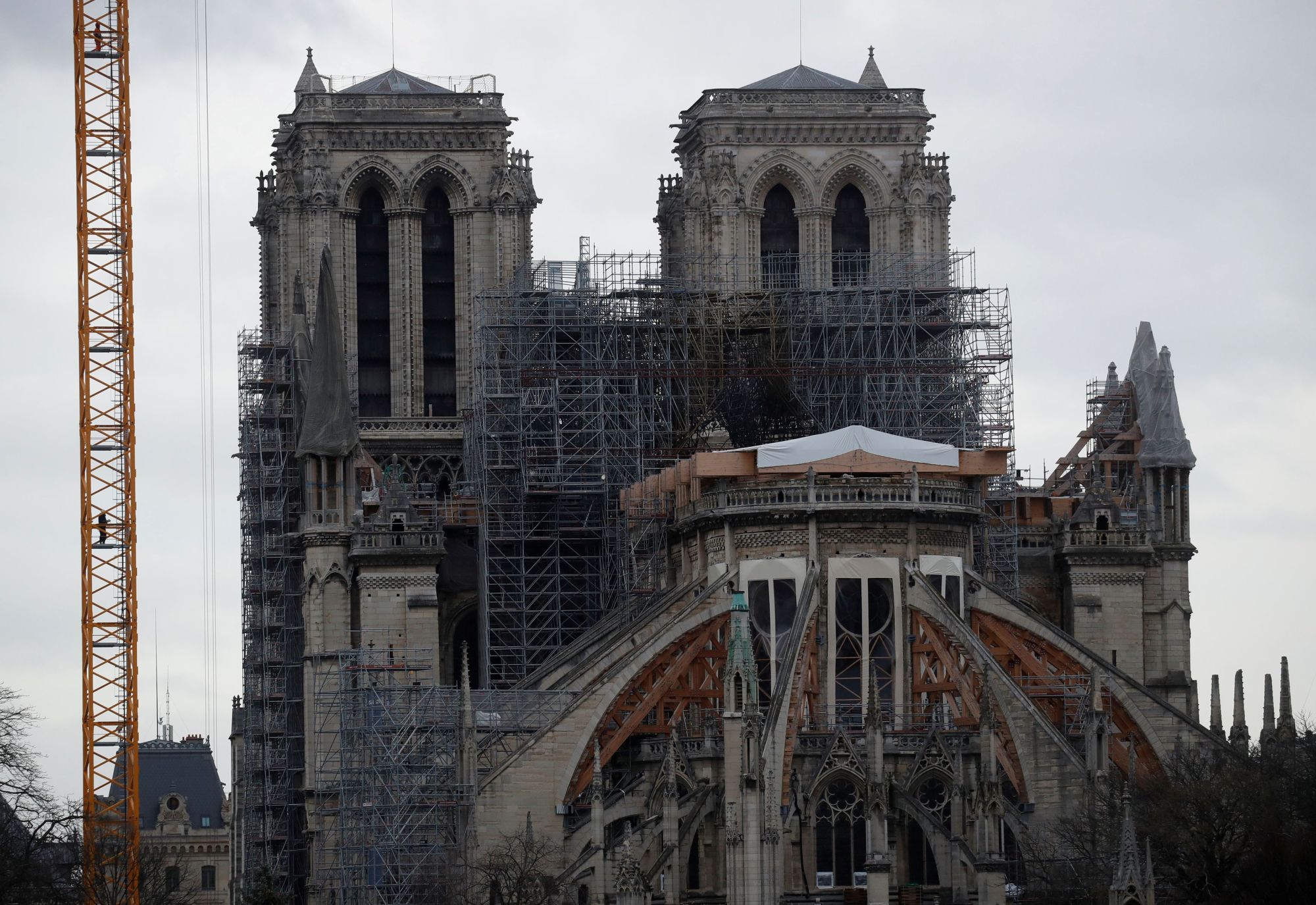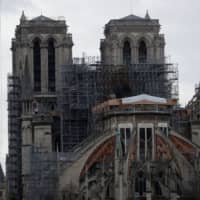The operation to shore up fire-ravaged Notre-Dame Cathedral is entering a risky stage as engineers resume preparations for the removal of scaffolding that could provoke a further collapse.
The Paris landmark lost its roof and spire in the April 15 blaze, but the main bell towers, outer walls and much of the vaulted ceiling survived, along with religious relics and artworks.
After the first Christmas in more than two centuries without Notre-Dame services, work resumed on Thursday to prepare the site for years of rebuilding due to begin in 2021.
Engineering teams have brought in a 75-meter crane now towering over the partly destroyed cathedral.
Starting in February, their first delicate task will be the removal of 250 tons of damaged scaffolding installed for a renovation planned before the fire, without it falling onto the medieval vaulting.
"We don't know how that is going to affect the stability of the structure," said a spokeswoman for the Catholic Church's Paris diocese that includes Notre-Dame.
Supports are now being installed around the mangled scaffolding to mitigate the risk of collapse, and a second lattice structure suspended above it for access.
The edifice is monitored by dozens of sensors, crack detectors and lasers to pick up any first signs of instability, so that workers can be evacuated swiftly and damage minimized.
"We've known from the start that there's a certain amount of risk nobody can really quantify," the diocese spokeswoman said. "A partial collapse of the vaulting is a possibility that can't yet be ruled out."


















With your current subscription plan you can comment on stories. However, before writing your first comment, please create a display name in the Profile section of your subscriber account page.